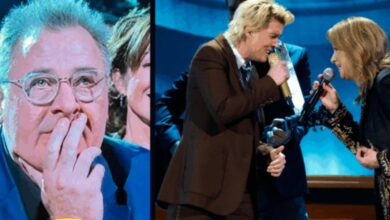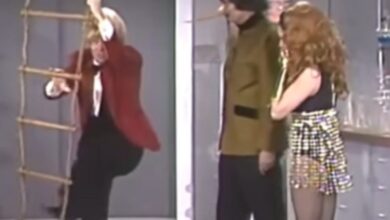Joshua Stafford Performs Queen Classic on the World’s Largest Pipe Organ
Joshua Stafford has long been recognized as a leading figure in the world of organ performance, with years of experience captivating audiences in the orchestral scene. A graduate of Yale School of Music, where he earned his Master of Music degree in 2012, Stafford’s reputation grew steadily through his refined artistry and technical command. Then in 2020, everything changed — his breathtaking cover of a Queen classic took YouTube by storm, introducing his musicianship to millions of new listeners around the world.
Taking on “Bohemian Rhapsody” is a bold challenge even for the most accomplished of musicians. The 1975 Queen masterpiece from A Night at the Opera is known for its dramatic shifts, multiple movements, and operatic complexity. Yet somehow, Stafford manages to translate that layered sound onto a single instrument — the pipe organ — balancing every change in tempo, mood, and texture with astonishing precision and creativity.
As he launches into the song, Stafford shows not only technical brilliance but also a deep emotional connection to the music. The way he transitions from the quiet, reflective opening to the thunderous rock section captures the full theatrical energy of Queen’s original vision. Each chord swells with power, filling the hall with a sound so rich that it feels as though an entire orchestra were playing alongside him.
What makes the performance even more extraordinary is the instrument itself. The organ Stafford plays isn’t just any organ — it’s the largest pipe organ ever constructed, officially recognized by the Guinness World Records. Housed in Atlantic City’s historic Boardwalk Hall, it’s an architectural and acoustic marvel, completed in 1929 by Midmer-Losh. With an astonishing 33,112 pipes, 447 ranks, and seven manuals, it’s a monument to both craftsmanship and sound engineering.
Performing on such a massive instrument is no small feat. Stafford commands thousands of pipes with two hands and, crucially, both feet — using the pedalboard beneath him to bring in the deep, resonant bass lines that make the performance thunderous. When the song’s rock section ignites, he doesn’t just play — he orchestrates, weaving melody, harmony, and rhythm together in real time. Watching him coordinate so many moving parts feels like witnessing a one-man symphony.
The sight of Stafford controlling seven separate keyboards stacked before him is mesmerizing in its own right. His movements are both graceful and intense, switching between manuals, pressing pistons, and shifting registers with the precision of a pilot in a cockpit. Every motion adds to the drama — his feet dancing across the pedalboard, hands leaping across octaves — all to capture the sprawling emotion of Queen’s anthem.
Beyond viral fame, Stafford remains deeply rooted in traditional and sacred music. He currently serves as the Director of Music at Riverside Presbyterian Church in Jacksonville, Florida, and as the Director of Sacred Music at the Chautauqua Institution in New York. His rendition of “Oh Come All Ye Faithful” showcases the same balance of reverence and artistry — a beautiful reflection of his versatility as both performer and leader within the musical community.
But Stafford’s talents extend far beyond the classical repertoire. A gifted improviser, he’s known for his ability to craft spontaneous pieces that feel fully composed. His skill as a silent-film accompanist has earned him recognition across the U.S., breathing new life into a century-old art form by creating live musical narratives that shift and evolve with each scene.
Whether interpreting Queen or accompanying vintage cinema, Stafford proves that the pipe organ can do far more than people expect. Its enormous range — from whisper-soft flutes to roaring brass tones — allows him to explore everything from rock to sacred hymns without ever losing authenticity. Each performance becomes an adventure in sound, where tradition meets innovation.
His mastery lies not just in the technical aspect of playing but in his ability to make the instrument feel human. The organ, often seen as cold or mechanical, becomes expressive under his touch. Stafford turns it into a storyteller, using its pipes to sing, shout, and weep. His performances remind listeners that great music transcends genre, era, and expectation.
There’s a reason performances like Stafford’s strike such a chord with audiences online. In a world of digital production and synthesized sounds, seeing one man command a 30,000-pipe behemoth feels both nostalgic and revolutionary. It’s a reminder of what human musicianship — raw, physical, and emotional — can achieve even in an age dominated by machines.
Every note in his rendition of “Bohemian Rhapsody” carries that balance of precision and passion. The song’s dramatic shifts — from operatic grandeur to heavy-rock intensity — seem tailor-made for an instrument of such range. Stafford’s ability to make it sound effortless speaks not only to his skill but to his profound respect for the original composition.
Joshua Stafford’s work stands as proof that even the most traditional instruments can reinvent themselves in the modern world. His performances breathe fresh life into the pipe organ, turning it from a symbol of the past into a vessel for the future of music. With artists like him at the helm, it’s clear the sound of the organ will continue to echo — powerful, timeless, and utterly human.





